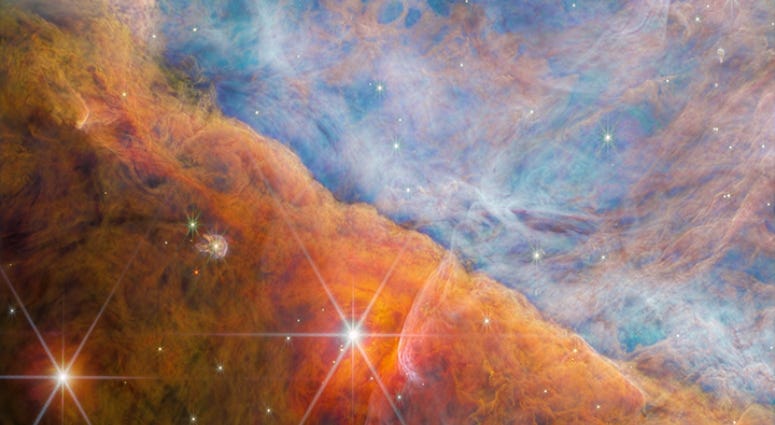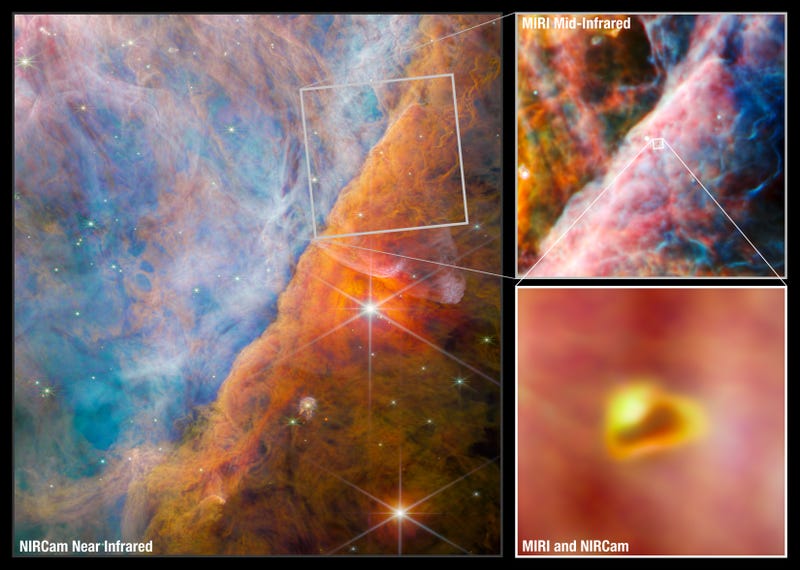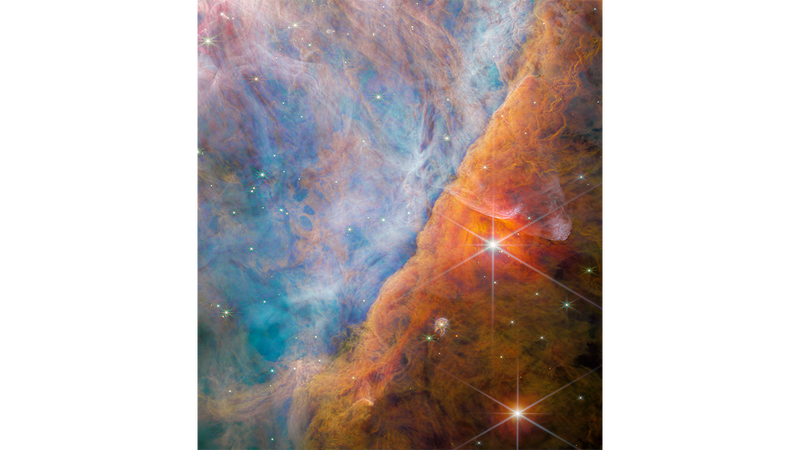
Though we all have differences, there’s one commonality that has prevailed for all of humanity: we are all floating on a rock, flying through outer space at over a million miles an hour.
Thanks to the rapid advancement of technology in the past century, we can observe much more of the universe than we ever thought possible.
The scale and sheer size of the universe make it impossible to truly learn everything, but it doesn’t mean we shouldn’t try.
Here's what's happening in space this week.
The James Webb Space Telescope has made yet another monumental discovery in space. A team of international scientists detected a carbon molecule in space for the first time using the $10 billion telescope.
The carbon compound CH3+, known as methyl cation, was found 1,350 light-years away in a young star system within the Orion Nebula with a protoplanetary disk (d203-506).
This discovery marks the first time a carbon compound has been detected in space. Carbon is a crucial element in the formation of all known life. Finding a carbon compound in space is groundbreaking as it gives scientists more insight as to how life develops on Earth and how it could potentially form throughout the Universe.

JWST's advanced scientific instruments, spatial and spectral resolution, and fine-tuned sensitivity made it the perfect observatory to detect a compound like CH3+. According to NASA release, it was the telescope's detection of a series of emission lines from the compound that confirmed the team's discovery.
An 'emission line' is a bright line in a spectrum caused by light that gives scientists information about the chemical elements found in a celestial object.
“This detection not only validates the incredible sensitivity of Webb but also confirms the postulated central importance of CH3+ in interstellar chemistry,” said Marie-Aline Martin-Drumel of the University of Paris-Saclay in France.

The planet-forming disk that the compound was found in orbits a red dwarf star, and while a red dwarf star doesn't emit a large amount of radiation, the star receives an intense amount of UV radiation from much larger nearby stars.
Complex organic molecules would ordinarily be expected to be destroyed by this amount of UV radiation. However, the team of scientists think it may actually be the bombardment of radiation that is fueling the compound's energy.
The scientists mentioned in their findings that the detected molecules differ from the ones typically found in protoplanetary disks.
“This clearly shows that ultraviolet radiation can completely change the chemistry of a protoplanetary disk. It might actually play a critical role in the early chemical stages of the origins of life,” elaborated Olivier Berné, lead author of the study.
LISTEN on the Audacy App
Tell your Smart Speaker to "PLAY 1080 KRLD"
Sign Up to receive our KRLD Insider Newsletter for more news

